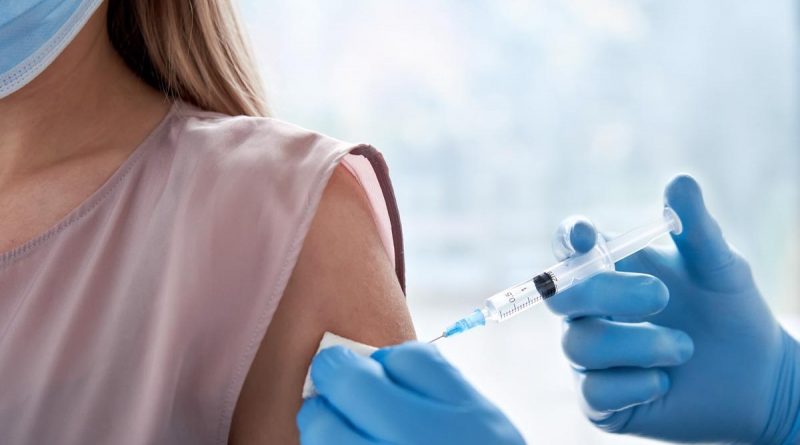Study explores neutralization of SARS-CoV-2 Omicron variant by subunit vaccine boosters
A recent study posted to the bioRxiv* pre-print server assessed the neutralization induced by subunit vaccine boosters specific for the severe acute respiratory syndrome coronavirus 2 (SARS-CoV-2) Omicron variant of concern (VOC).

To date, over 452 million confirmed coronavirus disease 2019 (COVID-19) cases have been reported globally, including over 6 million deaths. SARS-CoV-2 vaccines have proven effective in curbing the pandemic. However, reports show that emerging variants of concern (VOCs) like the Omicron have enhanced infectivity and can evade the immune system.
About the study
The present study examined the humoral immune response observed in SARS-CoV-2 Omicron breakthrough infections and verified the immune response elicited by the Omicron-specific receptor-binding domain (RBD) subunit booster vaccine.
The study enrolled a total of 53 individuals who had a known history of SARS-CoV-2 infection between January 2020 and January 2022. Among these, 13 patients had SARS-COV-2 wild-type (WT) strain infection, 20 patients each were infected with the SARS-CoV-2 Omicron and Delta VOC, confirmed via quantitative polymerase chain reaction (qPCR) to identify the viral strain. Blood obtained from these patients was treated to isolate plasma for further tests.
The mouse model involved in this study included eight-week-old female mice which were injected with Omicron-RBD and recombinant WT-RBD proteins as viral antigens. The mice were then divided into four groups: group 1 injected with three doses of WT-RBD recombinant proteins, group 2 injected with three doses of Omicron-RBD proteins, group 3 injected with two doses of WT-RBD and one dose of Omicron-RBD proteins, and group 4 was the control cohort injected with the adjuvant. Vaccination was performed at a two-week interval between the first two doses with the third dose administered a week after the second dose.
Serological samples were obtained from mouse tails prior to each vaccination and 28 days post the first injection. These samples were then evaluated for antibody titers using the enzyme-linked immunosorbent assay (ELISA) and the pseudovirus neutralization assay.
Results
The study results showed that the 13 patients with a known history of SARS-CoV-2 infections were matched with unvaccinated individuals to form the control cohort, taking into consideration the age, gender, and time of sample collection in the test groups. Within 50 days of symptom onset, serum samples were obtained at three to four different time points and analyzed for neutralizing antibodies (NAbs) using the pseudovirus neutralization assay.
In the WT cohort, the NAb geometric mean titers (GMTs) ranged from 779 to 1,152 against the WT strain, 356 to 457 against the Delta VOC, and 56 to 91 against the Omicron VOC. In the Delta cohort, NAb GMTs varied from 1,191 to 1,519 against the WT strain, 1,566 to 3,251 against the Delta VOC, and 282 to 479 against the Omicron VOC. Also, the range of NAb GMTs in the Omicron VOC cohort was from 151 to 2,123 against the WT strain, 360 to 1,516 against the Delta VOC, and 144 to 1,834 against the Omicron VOC. Overall, the NAb titers of the Omicron and Delta VOC cohorts were significantly higher against the SARS-CoV-2 WT, Omicron, and Delta VOCs than that of the WT cohort.
The researchers also noted the cross-neutralization capacity of breakthrough infections. The Nab titers of the serum samples of the WT cohort against the Alpha, Beta, Omicron, and Delta VOCs were reduced by 1.5, 5.7, 15.6, and 2.2 fold, respectively. In the Delta cohort, NAb serum titers against the Alpha, Beta, and Omicron VOCs and the WT strain reduced by 1.4, 5.1, 6.8, and 1.5 fold, respectively, as opposed to the high titers observed against the Delta VOC itself. The Omicron cohort had NAb titers lowered by 0.8, 1.8, 1.1, and 0.8 fold for the Alpha, Beta, Omicron, and WT, respectively.
The assessment of the neutralizing effect of the mice sera on different VOCs showed that a 26-fold improvement in NAbs against the WT strain was observed in group 1 and a 30-fold increase was found against the Omicron VOC in group 2. Also, sera from group 1 and only Omicron-immunized sera from group 2 neutralized the Omicron antigens exclusively and did not neutralize other VOCs. However, two doses of WT-RBD followed by Omicron-specific boosting increased the anti-Omicron NAbs by nine-fold.
Conclusion
The study findings showed that the current COVID-19 booster vaccines that use WT-RBD protein or WT-SARS-CoV-2 spike (S) messenger ribonucleic acid (mRNA) vaccines might be insufficient in preventing Omicron VOC infections. The researchers believe that an additional booster vaccination using Omicron-RBD proteins could improve the human humoral immune response against the SARS-CoV-2 WT and emerging VOCs.
*Important notice
bioRxiv publishes preliminary scientific reports that are not peer-reviewed and, therefore, should not be regarded as conclusive, guide clinical practice/health-related behavior, or treated as established information.
- Pai Peng, Chengqian Feng, Jie Hu, Chang-long He, Haijun Deng, Qinghong Fan, Guofang Tang, Mengling Jiang, Fengyu Hu, Feng Li, Kai Wang, Ni Tang, Xiaoping Tang, Ailong Huang. (2022). Extensive neutralization against SARS-CoV-2 variants elicited by Omicron-specific subunit vaccine booster. bioRxiv. doi: https://doi.org/10.1101/2022.03.07.483373 https://www.biorxiv.org/content/10.1101/2022.03.07.483373v1
Posted in: Medical Condition News | Disease/Infection News
Tags: Antibodies, Antibody, Assay, Blood, Coronavirus, Coronavirus Disease COVID-19, covid-19, Enzyme, Immune Response, Immune System, Mouse Model, Omicron, Pandemic, Polymerase, Polymerase Chain Reaction, Protein, Pseudovirus, Receptor, Respiratory, Ribonucleic Acid, SARS, SARS-CoV-2, Severe Acute Respiratory, Severe Acute Respiratory Syndrome, Syndrome, Vaccine

Written by
Bhavana Kunkalikar
Bhavana Kunkalikar is a medical writer based in Goa, India. Her academic background is in Pharmaceutical sciences and she holds a Bachelor's degree in Pharmacy. Her educational background allowed her to foster an interest in anatomical and physiological sciences. Her college project work based on ‘The manifestations and causes of sickle cell anemia’ formed the stepping stone to a life-long fascination with human pathophysiology.
Source: Read Full Article



